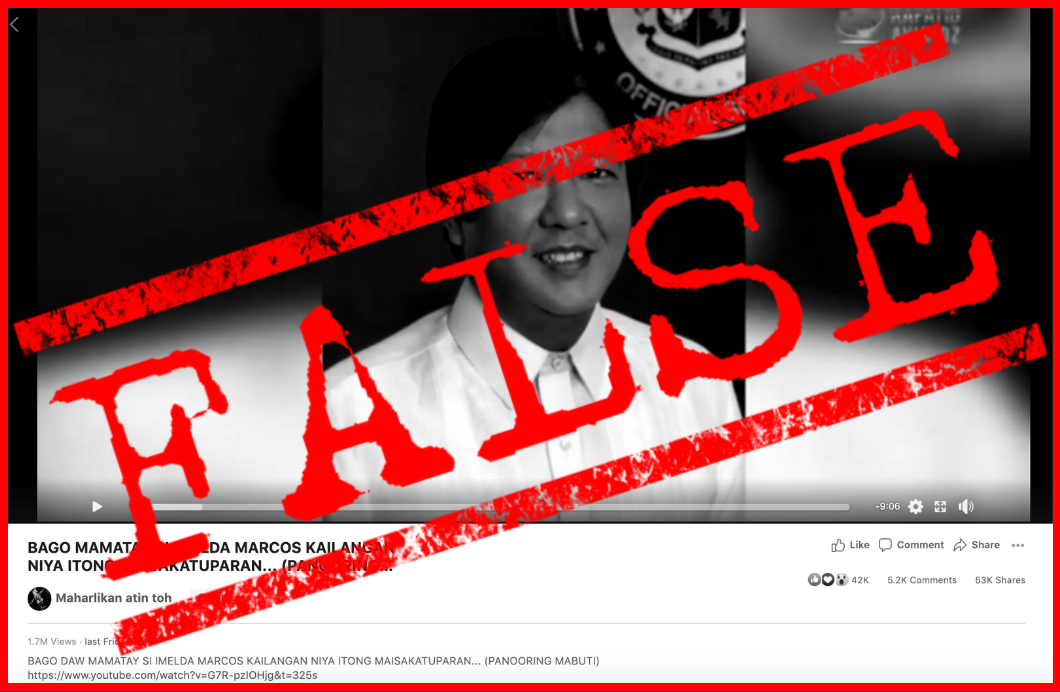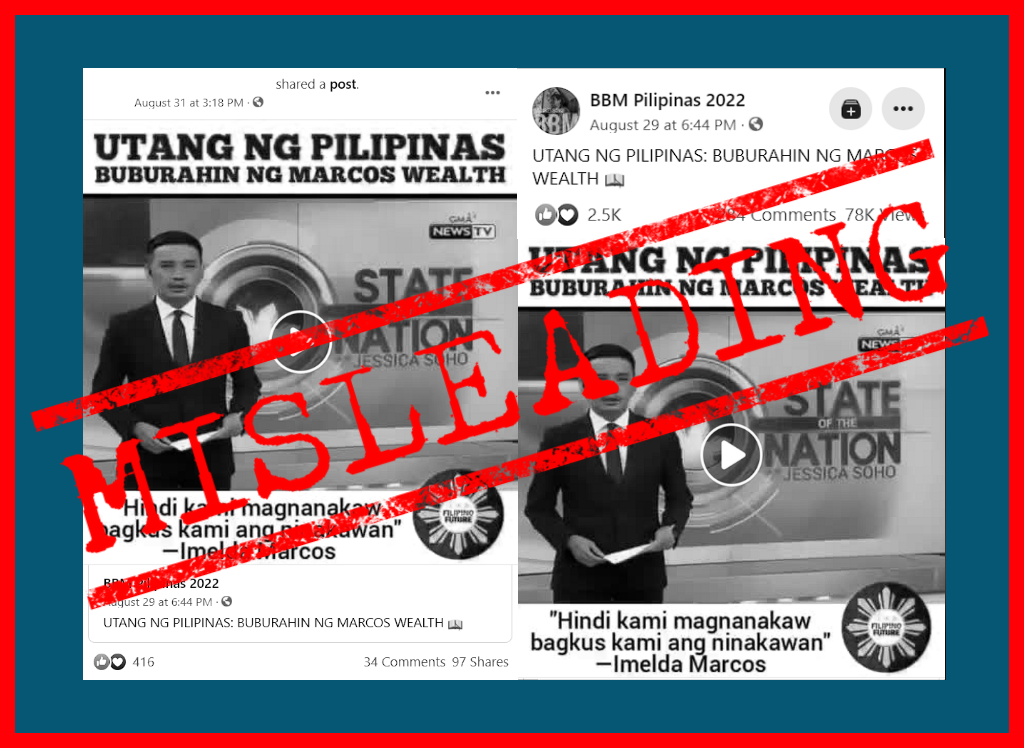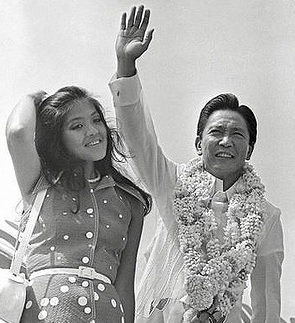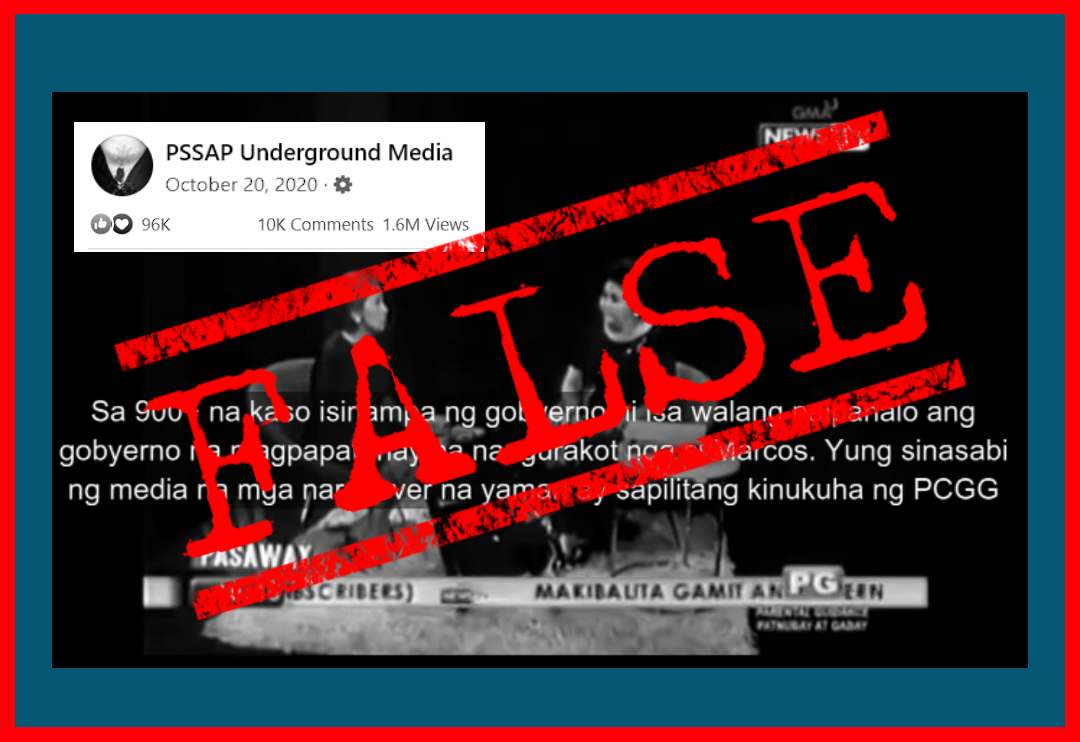A video carrying several inaccurate claims regarding the late president Ferdinand Marcos’ bank accounts in Switzerland has resurfaced on Facebook (FB) and TikTok.
Readers asked VERA Files Fact Check to verify the video, which was a copy of an April 28, 2020 episode of The Rita Gadi Hour hosted by FB page Katipunan ng Demokratikong Pilipino. It claimed, among other things:
- that Marcos and his wife Imelda opened international bank accounts in Switzerland in 1954 and in 1963;
- that the Marcoses’ first deposit in these bank accounts was US$68 million; and
- that the money deposited by the Marcoses did not come from ill-gotten wealth.
We debunk the following claims below:
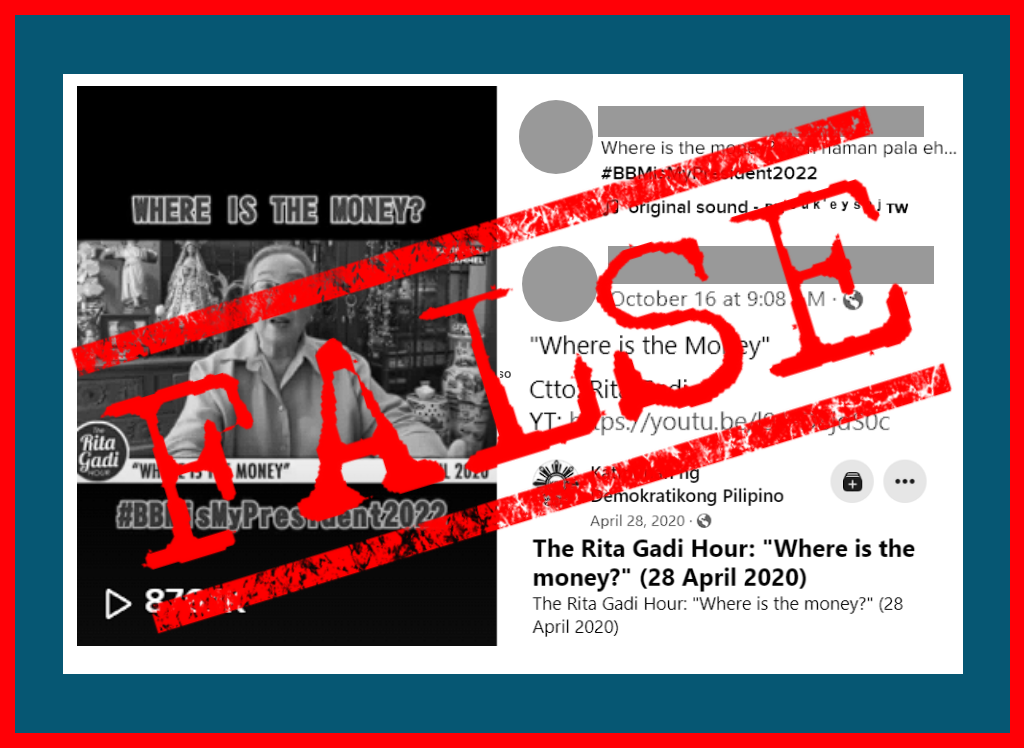
On the Marcoses’ bank account creation
CLAIM: Ferdinand and Imelda Marcos created international bank accounts in Switzerland in 1954 and 1963. This is inaccurate.
FACT: Marcos created a bank account at Credit Suisse on March 20, 1968 under the fake name William Saunders. His wife’s account in the same bank was opened the next day under the pseudonym Jane Ryan, as confirmed in a copy of a bank contract published in a 2013 edition of the published in a 2013 edition of the Philippine Journal of Third World Studies.
CLAIM: Ferdinand Marcos was a newly-wed congressman in 1962 or 1963 when the bank accounts were created. This is inaccurate.
FACT: Marcos was already serving his first term as president at the time the two accounts were made. He was first a representative of Ilocos Norte’s 2nd District from 1949 to 1959, and a member of the Senate from 1959 to 1965. He married Imelda Romualdez on May 1, 1954.
On the Marcoses’ first Swiss bank deposit
CLAIM: Marcos and his wife deposited US$68 million in their newly-opened Credit Suisse bank accounts. This is false.
FACT: Marcos and his wife deposited four checks worth US$950,000 when they opened four new Credit Suisse accounts on March 20-21,1968, as cited in a 2016 The Guardian article, in the 2014 book The Blood Bankers: Tales from the Global Underground Economy by James Henry, and in the 2015 book Marcos Martial Law: Never Again by journalist Raissa Robles.
CLAIM: It is a custom for banks in Switzerland to have identities of account owners hidden under pseudonyms. This needs context.
FACT: Not all account names are hidden under pseudonyms, as offered optionally in the numbered bank account system.
Banks in Switzerland implement the numbered bank account system which hides a client’s true identity under a number or a pseudonym, according to a 1998 journal article published in the a 1998 journal article published in the Boston College International and Comparative Law Review.
The identity of those who avail of numbered accounts are only known to banking officials in direct transaction with clients, who are usually wealthy or very important people. This prevents low-level bank employees, as well as tax authorities, from identifying clients through bank documents, as explained in a 1983 study published in the 1983 study published in the North Carolina Journal of International Law on Swiss banking secrecy.
Switzerland’s bank secrecy provisions, as stated in the country’s Federal Banking Law of 1934, criminal law, and privacy and tort law, shield bank accounts and transactions from disclosure by bank officials from access requests of external governments.
On the origin of the Marcos money
CLAIM: The Swiss federal judge asked the Philippines to determine if Marcos’ wealth was stolen money. This is misleading.
FACT: The Swiss Federal Court issued in 1990 a conditional ruling on the US$356 million of funds in its banks and in 1997 it affirmed that Marcos’ frozen assets that had grown to over US$500 million due to interest and other accrued amounts were of “tortious origin” or wealth caused by an act that has harmed others.
News articles about the ruling reported that the court ordered the return of around one-fifth of the US$500 million assets, to be placed in an escrow account at the Philippine National Bank
The Swiss Court in the 1997 ruling also ordered the return of assets to the Philippines, but only if human rights victims of Martial Law were given compensation through judicial proceedings in compliance with principles of the International Covenant on Civil and Political Rights.
Meanwhile, the Philippine Supreme Court did rule in 2003 that the assets in question were ill-gotten wealth or stolen money.
The FB netizen’s erroneous video garnered 2.1 million views, 65,000 interactions, and could have reached 24 million people, according to social media monitoring tool CrowdTangle.
It was posted more than 500 times and top traffic generators included FB pages For the Motherland – Sass Rogando Sasot, PSSAP Underground Media, and the verified accounts of personalities Brod Pete (Isko Salvador) and Richard Poon.
A TikTok user also shared part of the incorrect video, generating over 95,000 interactions and almost 876,000 views. The original video by the three-year-old FB page Katipunan ng Demokratikong Pilipino, meanwhile, got 28,000 interactions.
(Editor’s Note: VERA Files has partnered with Facebook to fight the spread of disinformation. Find out more about this partnership and our methodology.)
Have you seen any dubious claims, photos, memes, or online posts that you want us to verify? Fill out this reader reader request form.


